Women need to LIFT. Especially as we age.
Living Well

Written by: Meg Sharp, Fitness & Wellbeing Consultant, Cambridge Group of Clubs
The Globe and Mail recently published a terrific article on the importance of lifting weights for women who are experiencing perimenopause and menopause. It’s such a vital topic, we felt compelled to add our voice.
Menopause is a normal physiologic process in women typically beginning between the ages of 45 and 56. A healthy Canadian woman can expect to spend roughly 40% of her life in the postmenopausal years. We’d like to share information and strategies that can help women thrive during this significant phase of life.

Spoiler alert: We’re going to recommend you eat 75+ grams of protein per day and engage in lots of different kinds of exercise.
The loss of ovarian follicular function and decline in estrogen causes the cessation in menstruation and results in – for at least 80% of women – menopausal symptoms that are typically vasomotor, urogenital, psychogenic, and cardiovascular in nature. Specifically, the most common symptoms include hot flashes, fatigue, increased cardiovascular risk, urogenital challenges, difficulties sleeping, and increased depression, anxiety, and brain fog. Symptoms range in severity and can have a significant impact on physical, emotional, and mental wellbeing.
Physically, women in the menopause transition and there afterwards lose 2-3% of bone density per year along with the loss of lean muscle mass. Our bones and muscles give us strength, stability, and mobility. They are metabolically active tissues that keep us vital. Strong muscles and bones are KEY to a healthy life span. Strength training and other forms of intense activity have been shown to slow, halt, or even reverse the loss of these metabolically active tissues. Moreover, strength training has an impact on estrogen and the activity itself as well as accompanying increase in lean tissue can have a powerful impact on some of the other symptoms women may be struggling with.
Let me say this another way because it’s so important: Maintaining or increasing muscle mass can improve a women’s quality of life during and after this transition, as it can significantly lessen some or all of the physical, emotional, and mental symptoms we listed above.
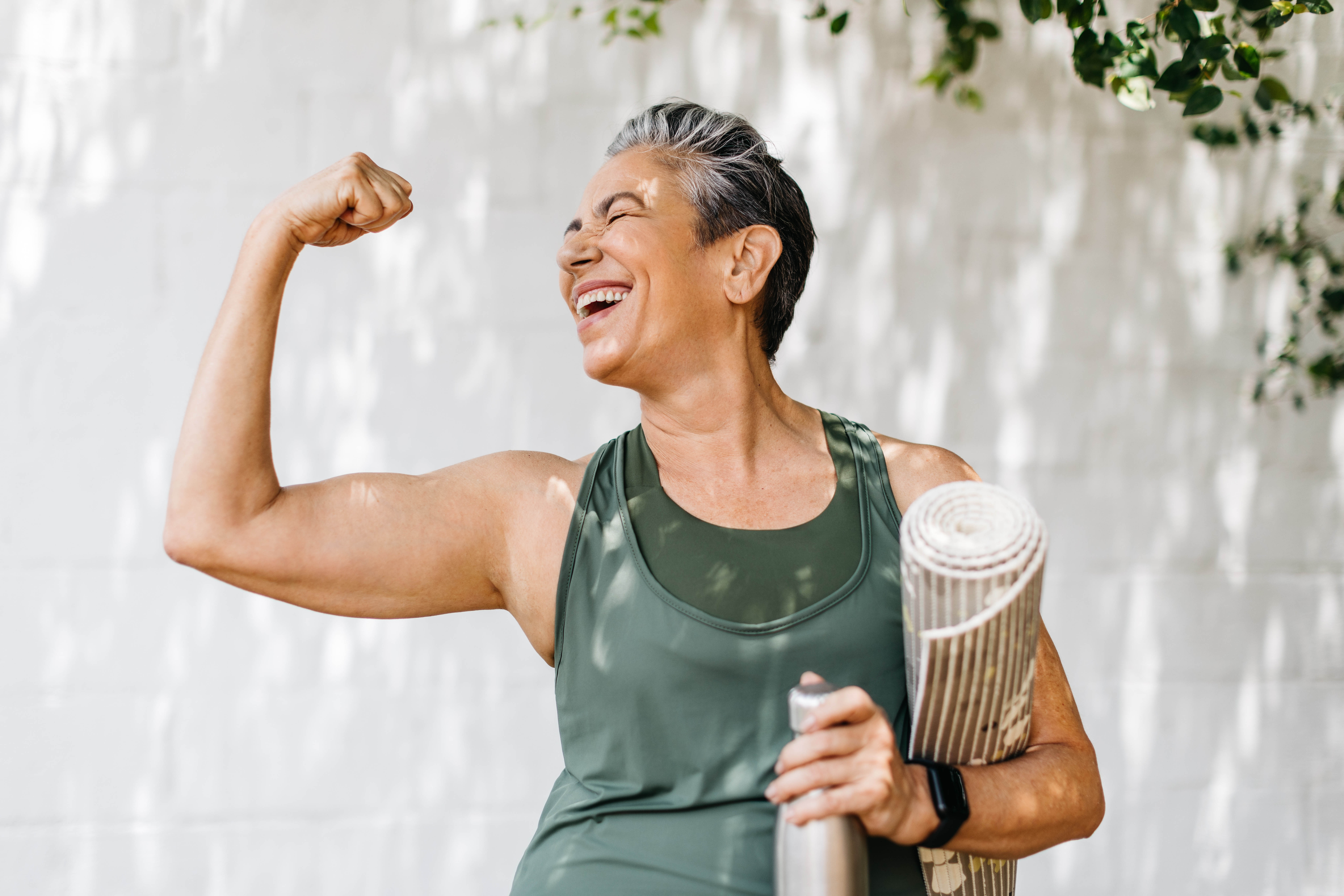
Below, we’ve curated a list of effective strategies and explanations for why we think they’re important. We’re by no means suggesting you need to do them all. Rather, we love how unique every woman and her body is. We offer an arsenal of ideas so each of you can determine what works best for you.
Speak to your doctor about hormone replacement therapy (HRT).
HRT has been a controversial subject since the 1990s when a major study found an association between HRT and higher risk of breast cancer and stroke. Many experts have shown the study overstated these risks, especially for women under the age of 60. Moreover, the study and its recommendations failed to properly consider the benefits of HRT including, but not limited to, improved metabolic, bone, and brain health, as well as increased muscular strength - both cardiac and skeletal - and the impact these variables have on mortality, as well as quality of life.
Start immediately.
Whatever your age, the time to start implementing changes is NOW. If you’re still years away from menopause, jump in!!! Get a head start building strength reserves and great habits.
Try to eat at least 25 grams of protein 3 times per day.
In addition to higher protein breakdown, menopause is associated with an anabolic resistance to dietary protein. This means we need to eat significantly more protein overall, as well as ensuring the protein is ingested in relatively high loads in order to synthesize muscle from the nutrients. It’s also recommended menopausal women avoid exercising in a fasted state, and try to eat within 30 minutes of exercise.
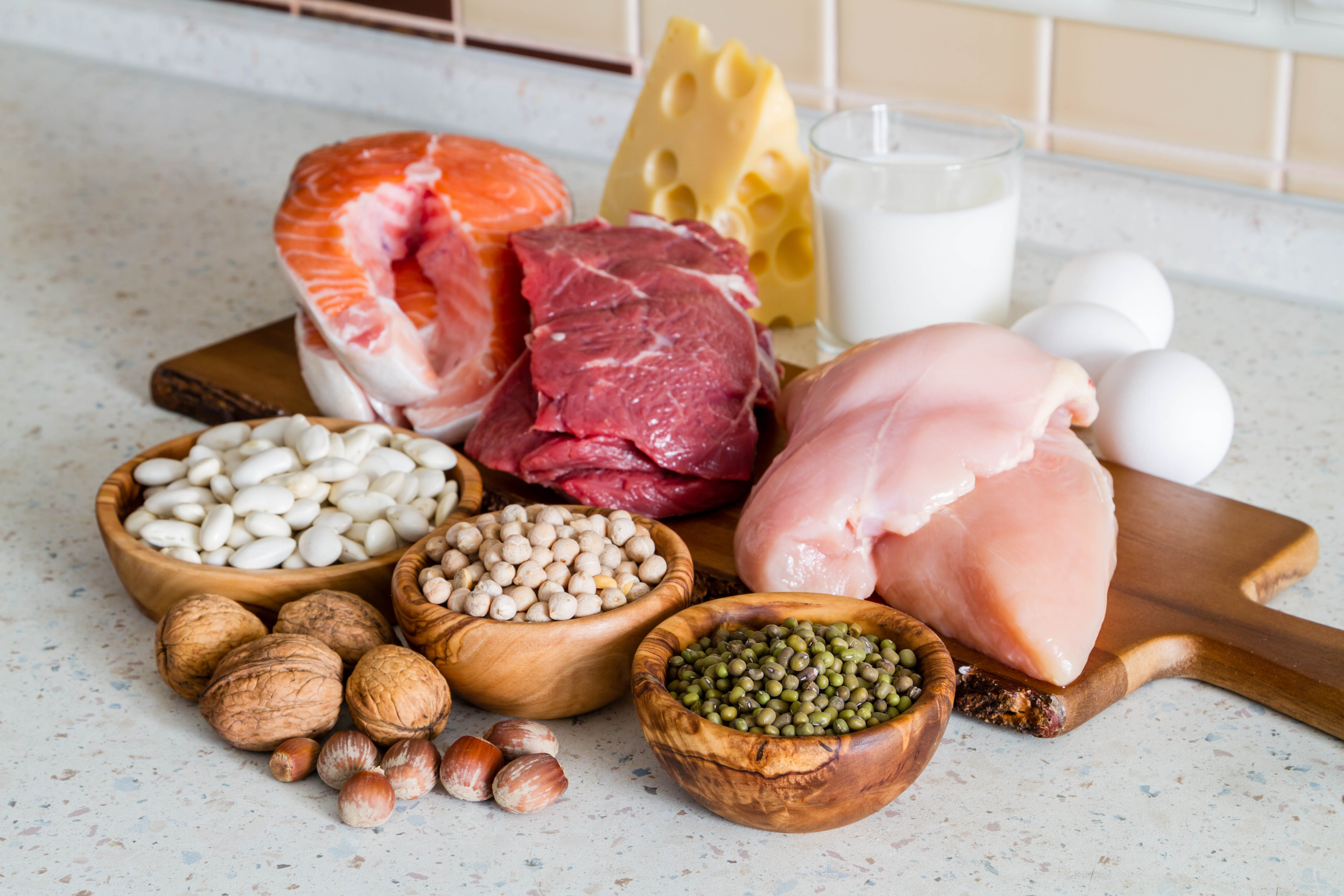
For some women, menopause can disrupt blood sugar levels and increase risk of developing insulin resistance. Ensuring all your meals are high in protein and fiber can mitigate these risks. High protein intake is also associated with better satiety and help with weight stability or weight loss if indicated.
Here are some examples of 25-30grams of protein:
1 cup of Greek Yogurt (20g) + 1/4 cup pumpkin seeds (9g)
1 large chicken thigh
1 cup cooked quinoa (8g) + 100g tempeh (20g)
10 large shrimp
2 eggs (12g) + 3/4 cup cottage cheese
4 ounces of salmon
1 + 1/2 cups cooked lentils
Build a Strong, Dynamic Foundation.
We’re going to recommend you lift heavy weights and add Sprint Training to your regime. Before you embark on either of those, you need to ensure you have a strong foundation of strength to optimize effectiveness of these intense protocols, as well as mitigate risk of injury.
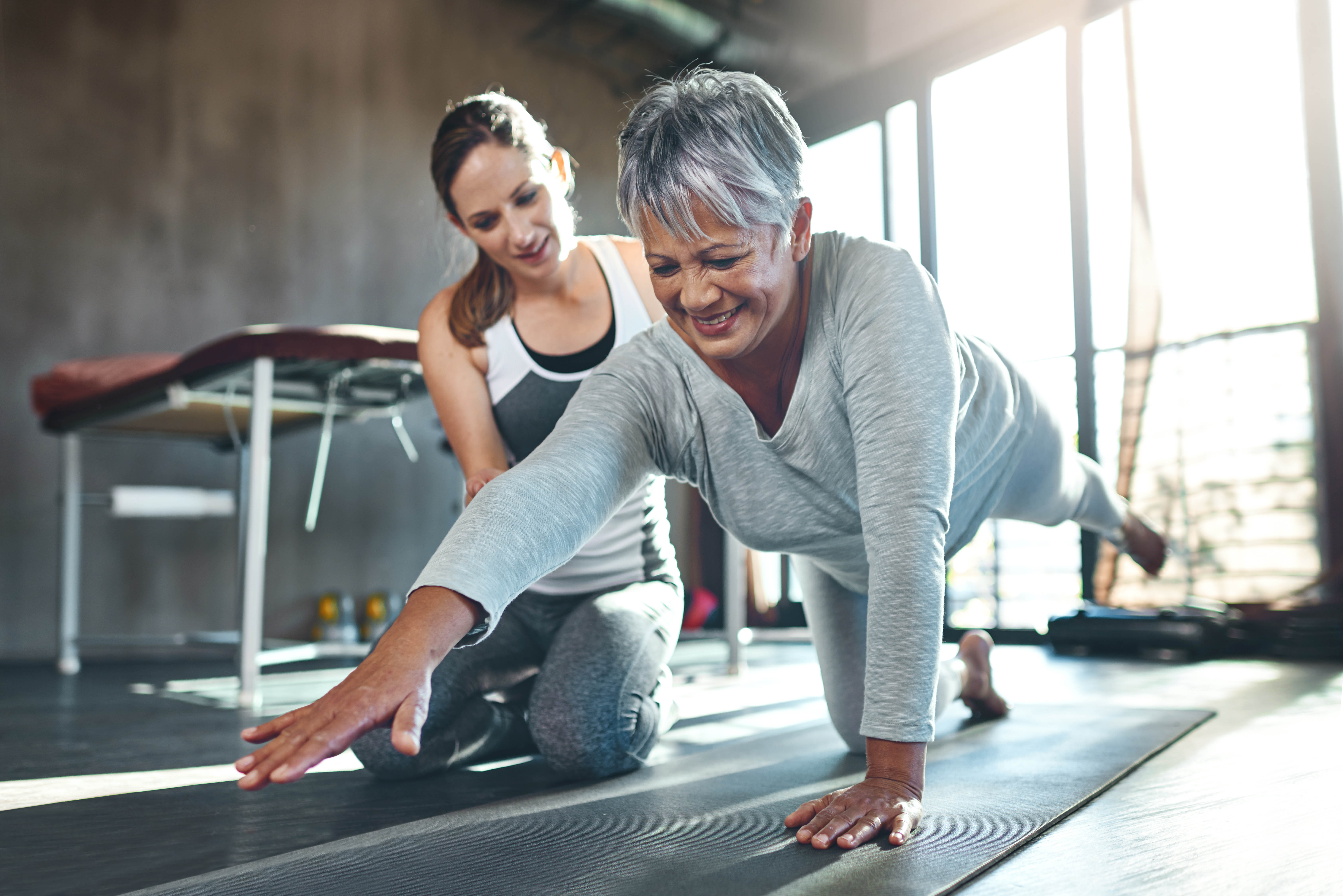
Lift Weights.
Resistance training of any and all types strengthens our muscles. As importantly, it pulls on tendons, which are thus strengthened, and – because tendon attaches to bone – the bones are also stimulated and strengthened. Tendons and ligaments – which support our joints, are strengthened, improving both stability and mobility of our joints. And a carefully created strength training regime will increase your active range of motion, making you more resilient, more comfortable, and agile.
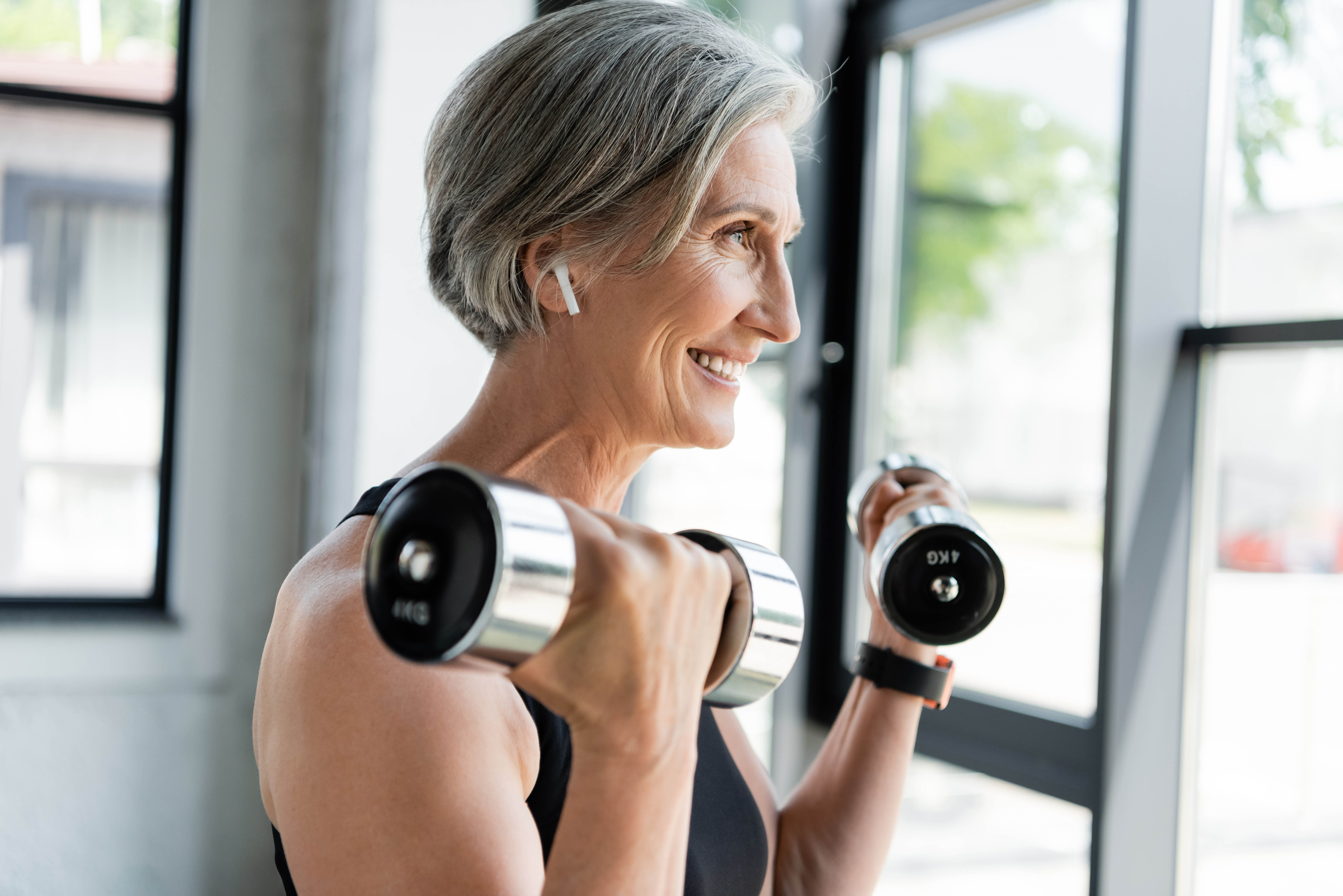
Lift HEAVY Weights.
Once you’re comfortable performing a variety of compound lifts with good technique for 10-12 reps, we recommend you progress to lifting weights heavy enough that you can perform 5-7 reps and feel like you only have 1 or 2 reps “left in the bank”. There’s no need to lift to failure to garner benefits. Choose 3 or 4 different exercises per workout and build your way to performing 3-5 sets of each exercise. Compound lifts include – but aren’t limited to – squats, reverse lunges, deadlifts, rows, bench presses, pull ups, pulldowns, and overhead presses.
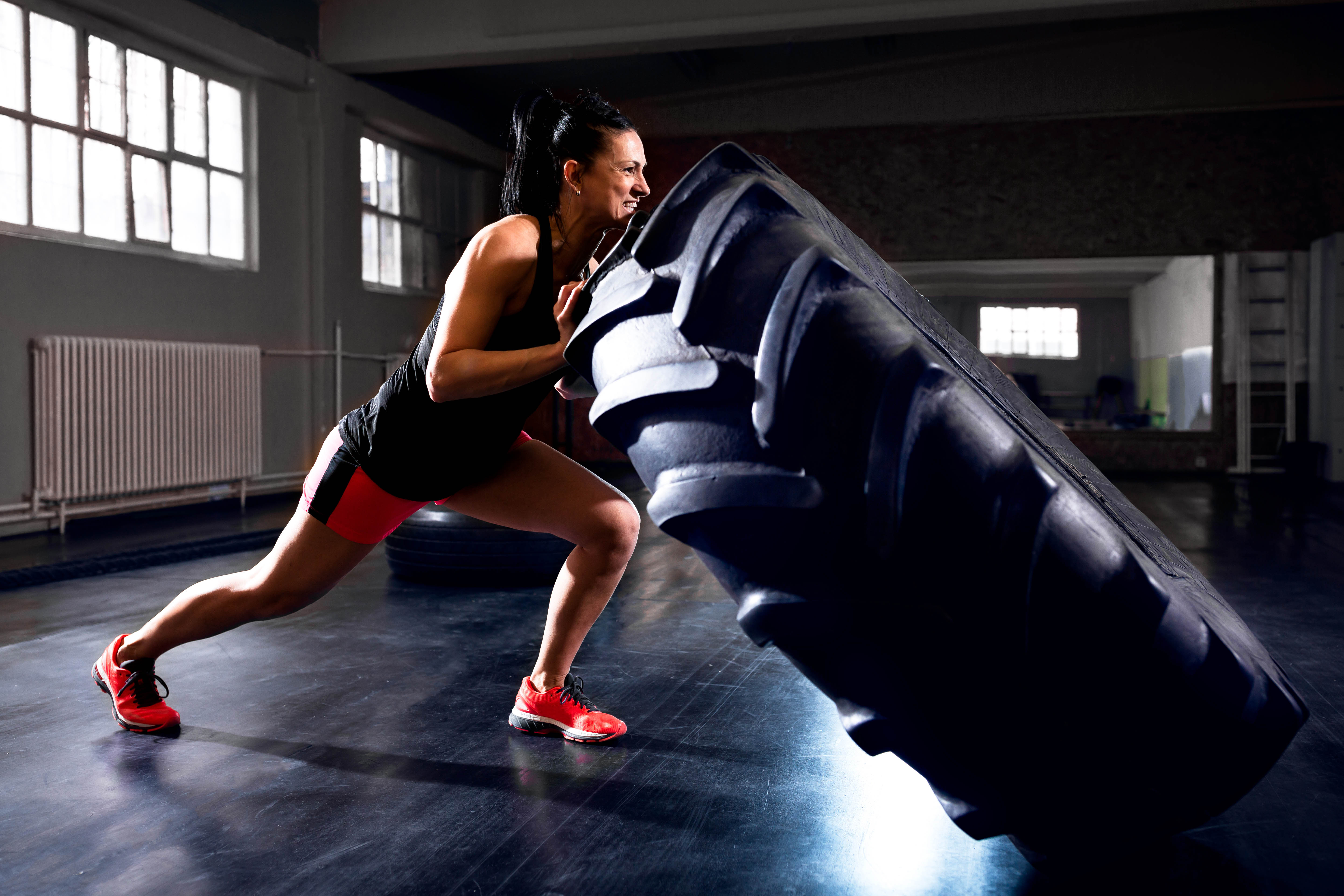
Menopause is accompanied by decreases in acetylcholine leading to weaker neuromuscular connections. This means our muscles don’t contract as forcefully and compromises our ability to build strength. Heavy lifting is one of the best ways to improve your neuromuscular strength. It’s also true that you tend to lift with more focus and are more deliberate in your movements when the weight is higher. This provides additional stimulation from a neuromuscular standpoint.
Heavy lifting is also associated with increased metabolism, better quality of sleep, and have been shown to be even more effective for increasing bone mineral density (BMD) and muscle mass.
We would love to help you with this. In as little as 6 sessions, we can help you build an outstanding foundation. Commit to 12 session and we’ll teach you how to lift and progress so you’re getting great results AND staying safe. Reach out to arrange a consultation, with our compliments.
TAC Members – Contact Meg Sharp
Adelaide Members – Contact Lauren Neal
Do Balance Work.
While improving your BMD can significantly improve the impact of and recovery after a fall, the very best strategy is to avoid falling altogether.
Strength training, full stop, is hugely beneficial here. Incorporating balance work into your strength workouts takes your resilience to another level. Think about anything and everything where you need to balance on one leg, assume a split position (lunges, split squats), or have to step up or down.
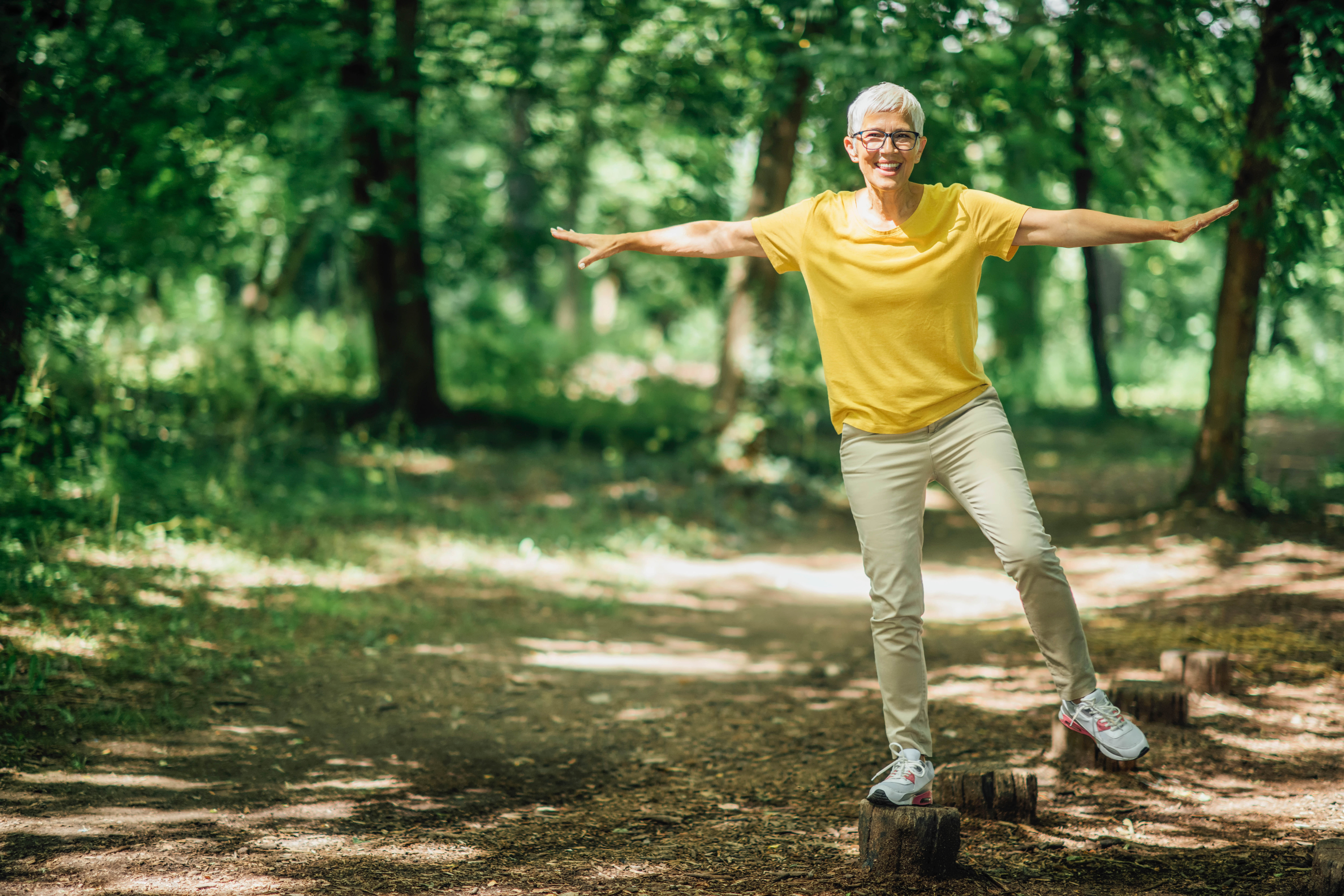
Do Sprint Training.
Sprint Training is considered one of the more intense types of interval training. In a nutshell, your work intervals should be “all out” - think 100+% - for no longer than 30 seconds. Depending on you, the length of each interval, and number of repetitions, you will need 2 to 4 times the recovery time. For example, if you plan on doing 10 x 15 second all out bursts on the assault bike, you will likely need 45 seconds easy spinning between each work interval.
Sprint training is phenomenal for your heart. It can help mitigate the increase in risk of cardiovascular disease that can accompany menopause, as well as maintain or improve your aerobic fitness giving you more stamina and energy throughout the day. This type of interval training is amazing for the brain and can boost memory, cognitive function, and ease both anxiety and depression.
If you’re looking for additional lean tissue and metabolic benefits, Sprint training helps these as well.
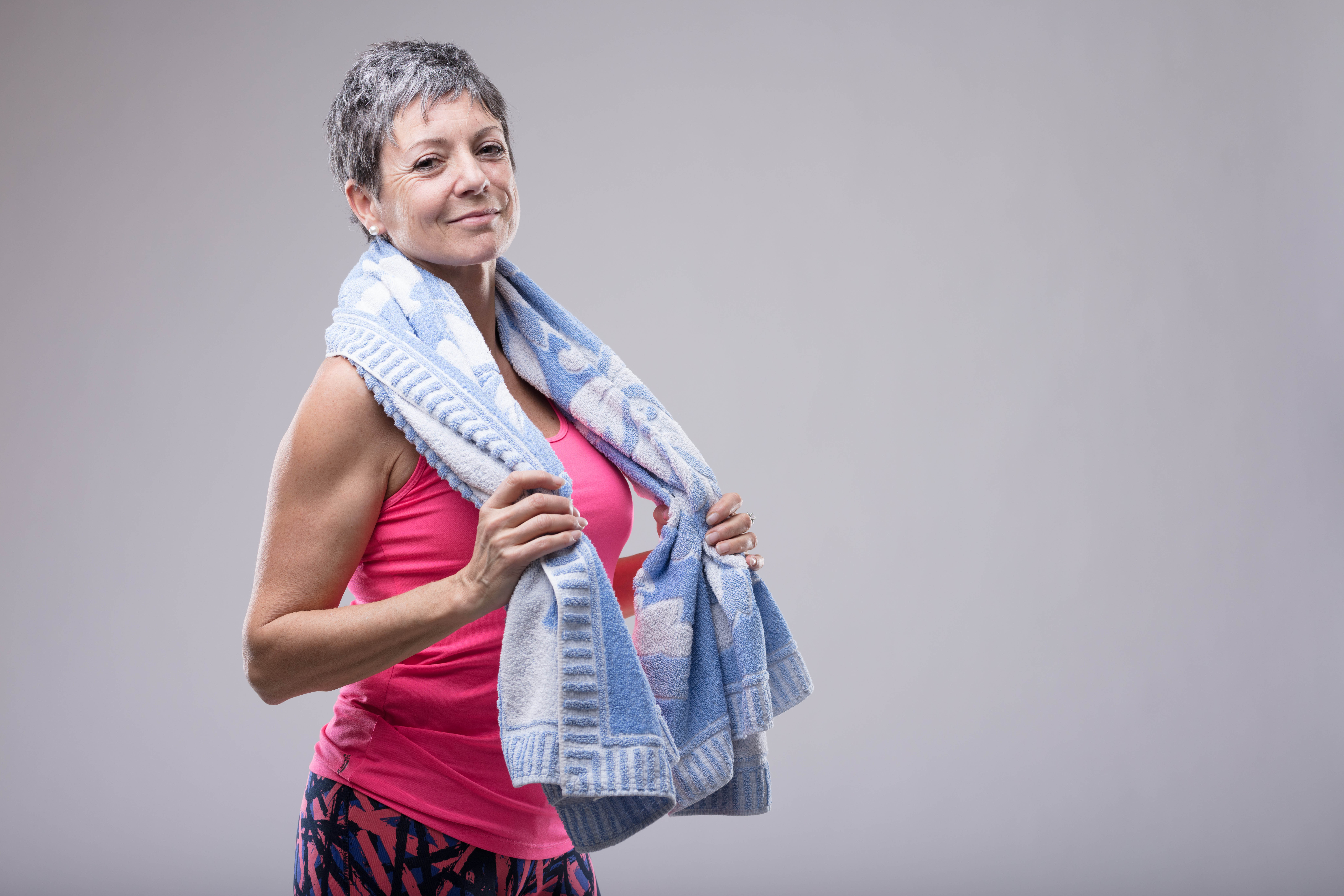
At the Toronto Athletic Club, we are looking to create a 12-week Learn to Lift program for women only. This would be in a small group setting (no more than 8 women) led by one of our female Strength Coaches and would cost $30/session. If you would be interested in joining such a group, please reach out to Rob Coates.
Women at the Adelaide Club can reach out to Lauren Neal to discuss future programming for women at the Club.
Celebrate what your body can do.
Our body image can play a huge role in our self-esteem and ability to thrive. Body image can be visual (how you see yourself), mental (what you believe about your body), emotional (how you feel about your body), and kinesthetic (how you sense and control your body as you move).
These different aspects of body image affect one another where positive experiences in one realm can improve and strengthen the others. Building your strength and stamina increases kinesthetic body image in leaps and bounds. As you focus on how well you are able to move, and how incredible your body feels as you hike, twist, and lift, you experience a sense of confidence and control that makes you feel fabulous in your body and impacts your emotional, mental, and even your visual body image.

Avoid comparing yourself to past selves. Discover new ways of developing your body and mind and celebrate those challenges and changes. As we mentioned in the beginning, this phase takes up almost half of your life. Let’s make it fabulous.